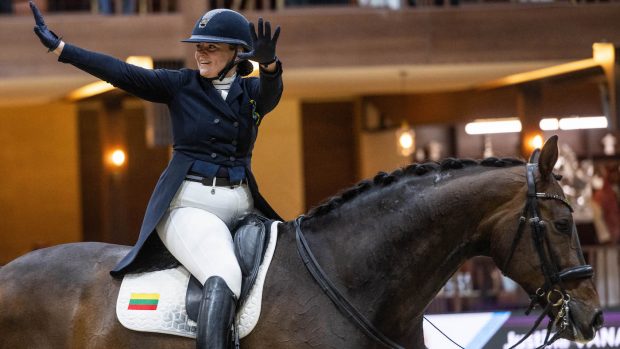Nicki Heath helps one of our”Sports Psychology for Success – Dressage” competition winners to improve their dressage performance
Q. I have been competing in affiliated dressagecompetitions and my aim for this year is to qualify for local Area Festival. Both my horse and I are mature – my horse is 19 and I am quite a bit older than that!
Our dressage scores have slowly increased but at the moment I feel as if I am stuck on a plateau around 55% (never quite getting the magic 57%). The last test we did was much better with a straight run of sixes, until I forgot a transition and this was reflected in the marks – 55% again.
How can I improve my test riding and maintain a positive attitude for the whole of the test?
Gillian Greenfield
A. Without knowing either you or your horse it is difficult to assesswhether this is a training issue, a problem associated with your horse’s way of going or something that is specific to test riding.
The “Sports Psychology for Success – Dressage” tape which you have won will address the issues surrounding quality preparation, which may help on the day. Try to focus on one or two key aspects and forget about the rest.
If you are getting fairly consistent 6s then I have to assume there are certain movements that you are getting 4s for and that your collective marks are probably 5s.
Look through your old test sheets and see what the most frequent comments are. Also look at when you have been given 4s and why. Take this as a starting point and work towards improving the 4s to 6s during your training. Don’t worry about the rest of the test movements at this stage.
An example could be straightness, which would need plenty of supplying exercises and a real awareness of what is happening underneath you. Ask your instructor to help you focus on straightness and concentrate on trying to feel when things are right or wrong. This will improve your feel and gives you a specific target to focus on throughout the test.
Keep it safe and simple (KISS) to prevent you trying too hard, which in turn creates stiffness, tension, andcrookedness in the horse, and you may find things unravel themselves.
This approach should enable you to remove the 4s and allow 6s to appear into the collective marks, which are doubled in the final addition. Suddenly you have exceeded your 57% target and attained 60%. And don’t limit your aims to 60%, the only way is up!
Forgetting the test is easily done and unless this is a frequent occurence I wouldn’t be too concerned about it.
Good luck and I hope you enjoy the tapes,
Nikki Heath


